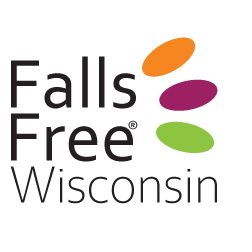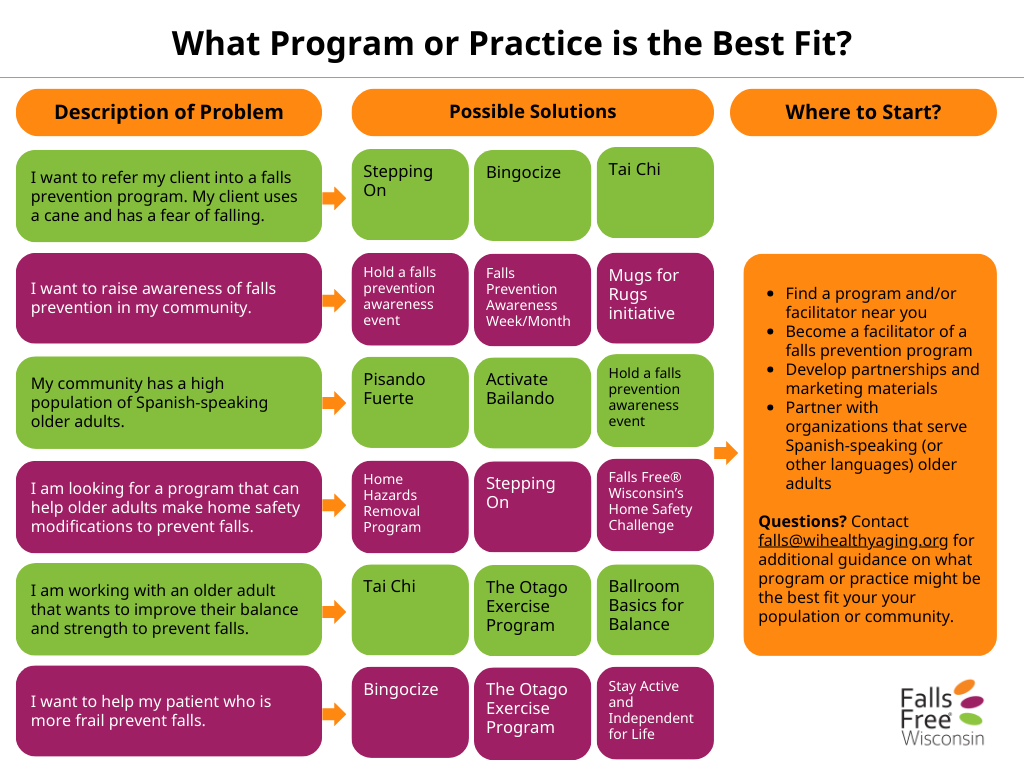Section 2: Formation State
Start by reviewing the Fall Prevention Action Plan developed by the Wisconsin Department of Health Services as well as your local community action plan or local aging unit’s three-year plan. If there is a non-profit hospital in the community, it may be helpful to review and align with the community health needs assessment and priority areas. Additionally, look at your local health department’s community health assessment, which may be separate or combined with the hospital’s assessment. These action plans lay out strategies and action steps that should be initiated to reduce falls and falls-related injuries. These tools can also assist in gaining community support, promoting awareness, obtaining funding for falls-related initiatives, and building goal and mission statements. Although the state plan is dated, it remains viable.
When building/growing your fall prevention coalition, think about those that have a vested interest in falls prevention in the community. Categories to consider include community members, healthcare providers, public health, local businesses and organizations, local government agencies, local aging unit or Aging and Disability Resource Center (ADRC), Managed Care Organizations (MCO’s), hospitals/clinics, emergency medical services (EMS), regional trauma advisory councils (RTAC), and policy makers to start. It is recommended that the ask is being made with a champion or leader within each of these organizations. Once you have a small group identified you can start planning your first meeting.
Assemble the small group to discuss an overall strategy and form a core leadership and exploratory team. Begin to draft ideas and goals from this group. As one of the group’s first action items, the case for improved balance and mobility in the community must be a priority for the group among competing interests in the community.
Take time to collect some information early in the development of the group, as well as scanning the programs and services that already exist in the area for fall prevention. Some questions (from the Practical Guide to State Coalition Building to Address a Growing Public Health Issue) that may help you gather necessary information include:
Working within the coalition group, discuss what data is available for use in planning efforts. Many times, public health, health systems (including hospitals, clinics, and emergency services) have data points on local falls and older adults. Other data resources could include:
Community Characteristics/Programs
When planning your coalition outreach it’s important to consider the characteristics of older adults in the community. Some of those include income level, health literacy, education, culture and ethnicity, access, and transportation. When doing a community scan, identify what is in place and what needs/gaps exist.
Once data and information is collected and a scan of programs and services is completed, start by choosing the program or programs (new or existing) that best meet the needs of the community. Use these programs to develop a plan and process for referrals to link healthcare providers and aging network services to enhance relationships and collaboration. One tool to use with providers is the Stopping Elderly Accidents, Deaths and Injuries (STEADI) provider toolkit. Another is to explore other programs that may not exist in the community but may meet a need. Review the CDC Compendium of Effective Fall Interventions, visit the NCOA website for a high-level evidence-based fall prevention program list or view a list of programs and practices here.
When choosing a program or re-evaluating an existing one, consider the following within each community:
Besides physical mobility, scan and/or add in programs and resources that cover medication management, home safety, vision, footwear, and environmental safety (community). Evidence-based health promotion programs offer solutions to managing chronic conditions and improve balance, strength, and mobility by encouraging physical activity, maintaining a healthy weight, and a regular sleep schedule to maintain independence. Some programs focus on creating a safe home environment and developing the skills to discuss medication management and lifestyle changes with a health care provider.
A strong collaboration between healthcare and facility-based programs is key to providing an integrated intervention that can be tailored to address risk factors and modifications for older adults within the local community; include members in these areas when building your coalition.
Other online resources for building a coalition includes:
Once you have completed steps 1-3 above, the next step would be to have a core working group/steering committee. This group would establish the groundwork for the coalition by recruiting members, planning the first coalition meeting, and drafting the coalition’s mission and goals. It’s best to have this group lead the coalition, rather than an individual, as they will:


